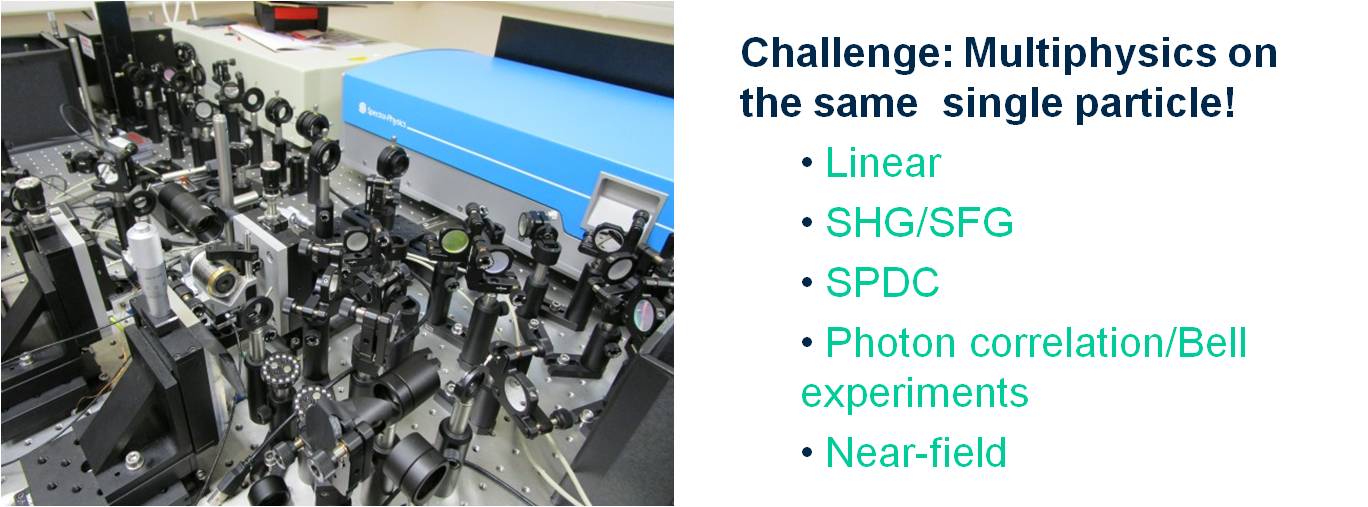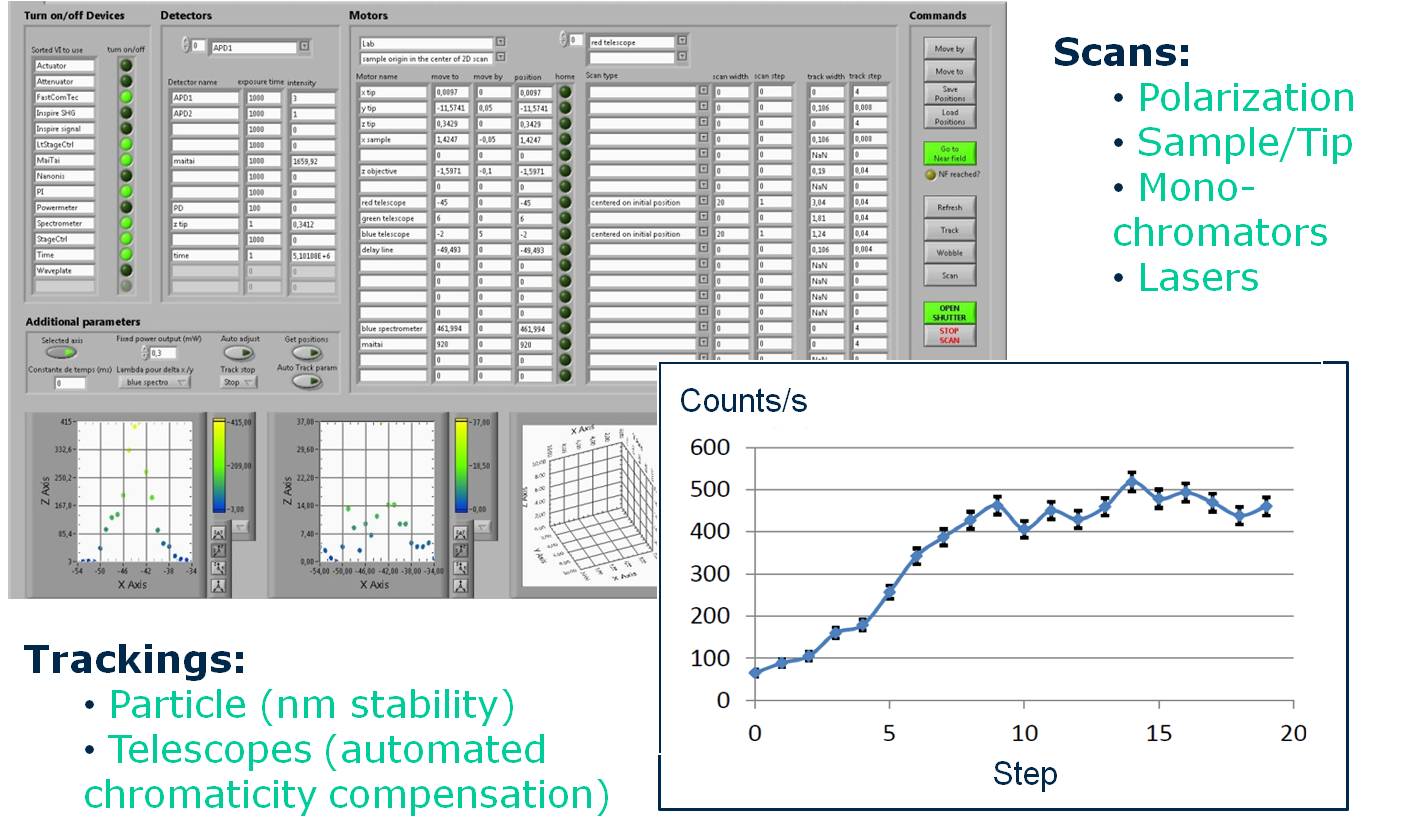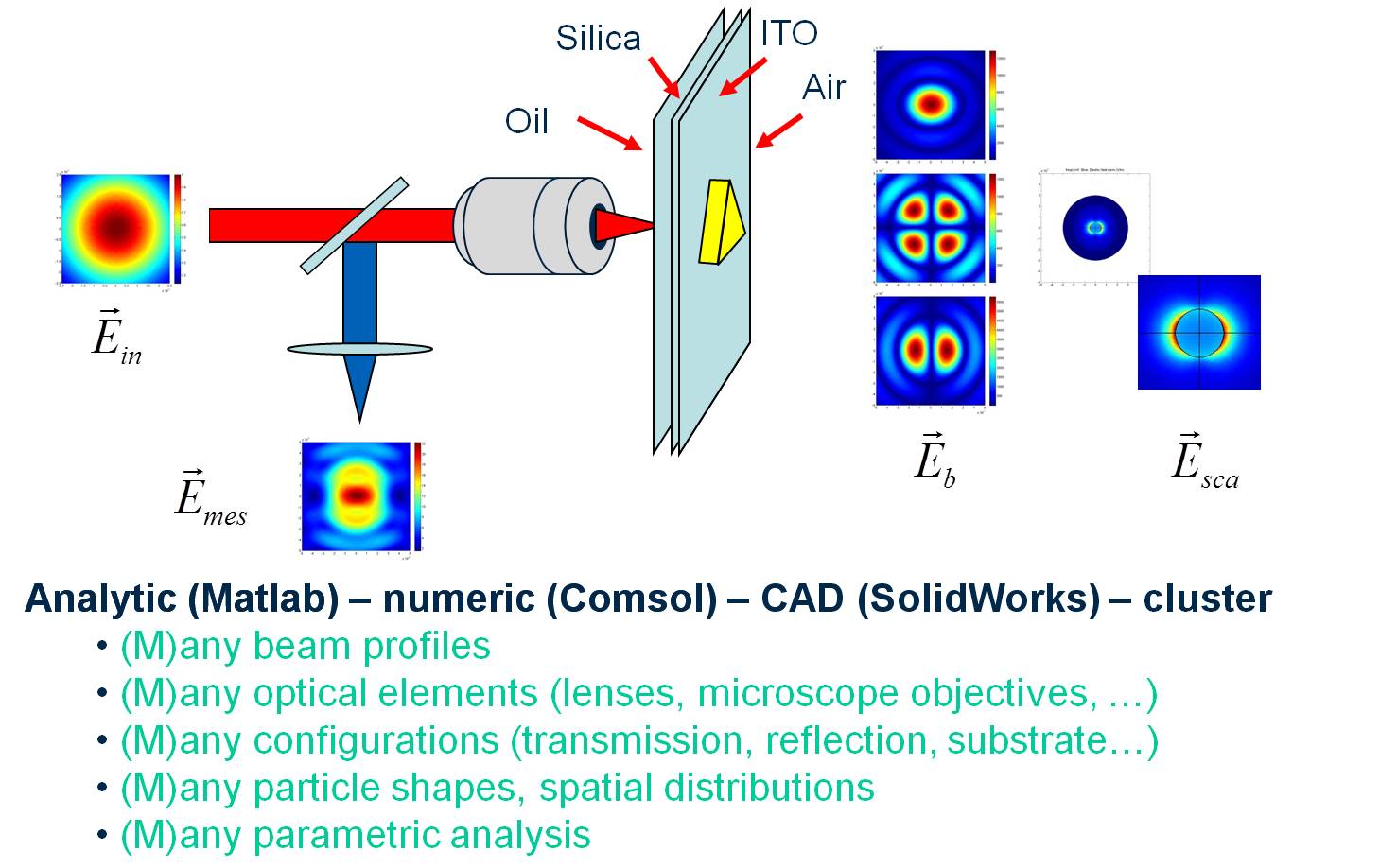Experimental developments
Since 2014 I have devoted a significant effort to build a unique setup, serving to investigate various physics (SHG, SFG, SPDC, pump-probe, etc ) onto the same single nanostructure simply by flipping mirrors. Chromatic aberrations are automatically compensated by sets of motorized telescopes. The contribution of the dark noise from the single photon counting modules (SPCM) has been reduced below 1 count/s by synchronizing the detection with the pulsed laser source. The latter is composed of a Ti:Sa oscillator pumping an OPO, covering a spectral range from 350 nm to 2.5 µm. The setup is fully computer-controlled for multiple scan capability (for example scanning the spectrometers and the laser simultaneously). I have further developed tracking algorithms to maintain the particle in the focus point with nanoscale resolution. Finally, the photon correlation module with four SPCMs (for future Bell inequality test experiments) is operational, in addition to the near-field manipulator (N. Chauvet and M. Ethis de Corny PhD students).


